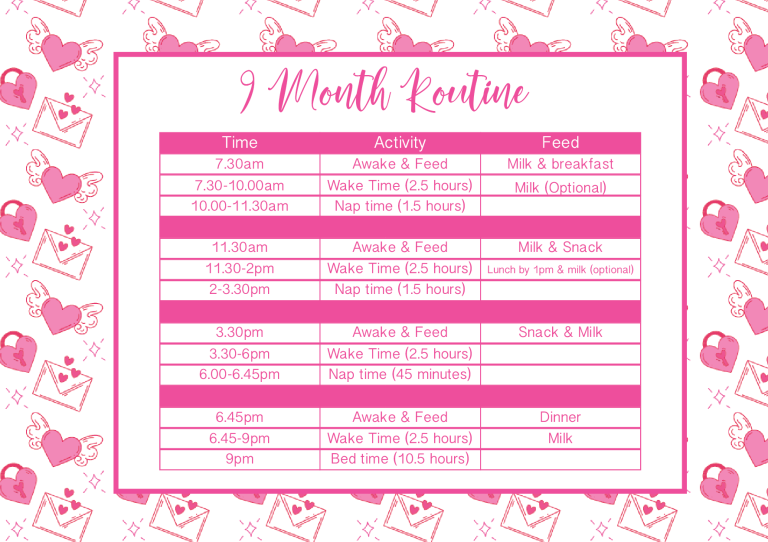Sharing is caring!

I do have affiliate links throughout this blog. The links provide me with a small commission at no extra cost to you!
Sleep training can be accomplished in weeks, while sleep deprivation can last for years.
Benefits of Sleep Training
- Sleep training your child will improve their learning. Sufficient periods of sleep are necessary for ideal growth.
- Children who sleep well at night are more enjoyable to be around throughout the day.
- Your baby can learn important life skills: self-soothing and falling asleep unassisted.
- Both you & baby will have healthy sleeping habits.
- Infant sleep issues affect maternal depression directly.
- Our kids thrive on routine – and so do we!
- We can schedule appointments & outings easily.
- You can give quality time to your other kids.
- You’ll feel more in control.
- The time spent with your baby will be enjoyable, quality time
- Your partner and you will have time for each other
Misconception
A LOT of new parents get advice that their babies will be waking up many times a night for years. That advice is detrimental. Babies need sleep even more than we do. Their tiny bodies work hard in their sleep. Growth hormones are being produced, helping our babies gain weight, fight off infections and produce antibodies.
It’s not normal for your child to be waking up multiple times at night, crying until you help them to sleep. That’s a baby who has trouble sleeping and it’s interfering with their body’s natural development. It’s a problem and has a solution. You shouldn’t just go with it for the next few years. Accepting bad sleep in babies’, advances to accepting it in childhood, adolescence, and then you end up with adults who don’t give sleep the required priority. Lack of sleep leads to health issues.
Steps of Sleep Training
As a new mom, running my own business and juggling everyday life while still trying to get a minimum of 8 hours of sleep a night was seemingly absolutely impossible. Just when I thought I had lost all hope, I decided to ask for advice from a client. She also went through being a first-time mom and having to juggle a similar workload. She told me that it was impossible to do anything constructive without having the child in a routine, she also referred me to a sleep training agency.
At first, I was a bit skeptical, but after travelling for a family event, and my toddler staying up the whole night because we were in a new place, I had reached the end. I was exhausted at the function and made a firm resolution to contact the sleep trainer the second we got home
From speaking to other mothers, I knew that doing sleep training too late is way more challenging. My daughter was 9 months at the time and after seeing the sweet results of successfully sleep training her, I wished I had done it much sooner. She is now 2 and sleeps 12 hours straight at night on her own.
Sleep training cannot be done in isolation. Before it can be implemented, a few steps have to be rectified:
• Awake time based on age
• Feeding program based on age
• Number of day naps based on age
• Sleep Props
Every detail of the sleep training is shared below in steps – feel free to ask any questions that you have so I can help to the best of my ability.
Have A Routine
The most important thing I discussed with the sleep trainer was having a routine. Without a routine, it is not possible to do this method of sleep training. She provided me with a routine for my 9-month-old which I have attached below. For this sleep training method to be successful, you have to follow a strict routine for 21 days. The reason for this is that children need routine, it creates trust, they can trust that at a certain time I will be fed, and at my nap time I will get to sleep. Before we had our routine, it was guesswork when our child would nap, we could rock her for an hour with no luck. After sleep training, it is easier to plan our days and appointments because we can plan around her sleep.


It takes 21 days to form a new habit. For 21 days I tried my best to follow this routine to the second. I informed my family about it, and a lot of them had been supportive, while others used to get super mad at me for having to leave events early just to make her nap. Her nap had to be in her cot every day. You have to be patient and persistent. For the 21 days, I had to wake up my daughter from her sleep and her naps exactly on time. It was really difficult I hated having to wake her, but I knew it would pay off and I knew that being sleep trained will benefit not just me, but her as well. Read on to understand the routine better and how she learnt to sleep on her own!
Awake & Feed
Babies’ & toddlers’ night sleep is dependent on how well their day goes. If they sleep for the right amount of time, at the correct hours during the day, they will sleep well at night. If they miss their naps during the day, they will be overtired and find it more difficult to fall asleep. When they get overtired, it is really difficult to calm them.
At 7.30 am, I had to wake my child, give her breakfast, change her nappy, and breastfeed her. I added in optional extra milk feeds because I wanted to feed my child often.
Wake Time
During her wake time, she’s happy because she’s well-rested & well fed. She plays throughout her wake time. I was told not to feed her to sleep because this will mess with the sleep training, so I used to do an optional feed an hour before her nap. Next comes the fun part!
Nap Time
Part of the sleep training routine was to not rock, feed, pat her to sleep. It seemed impossible for her to even fall off to sleep without any of these. The sleep trainer advised me to do a few things before putting her in her cot:-
– Let Her Hold A Taglet
A taglet provides a soothing sense of security.
– Quiet Dark Room
First, I had to take her to a dark and quiet room. It’s good to have blockout curtains, but we didn’t have and sometimes she used to wake up early from her night sleep because of this. My favourite is these cute nursery blockout curtains from Amazon. Before putting her in her cot, the environment must be calm.
– White Noise
Second to play white noise in the room so that outside noises wouldn’t distract her.
– Time To Sleep!
After 5 minutes of quiet, calm time. It is time to put her into her cot. I gently lay her down in the cot and leave the room. If she cries, I was told to wait a minute then go in and calm her with my voice, if that didn’t work calm her with my touch while she’s in the cot, without patting, and if all else fails, pick her up to calm her without rocking, once she is calm, put her in the cot and repeat the process till she sleeps.
I honestly thought it would be impossible for her to sleep on her own. To my surprise, I only had to go into the room 3 times on the first day to calm her. The next 20 days flew by. There were some days when she wouldn’t sleep at nap time but the rule for the 21 days was to follow the routine and count the time from when you put her in the cot. So, regardless of the time she fell asleep, I had to take her out at the awake time.
The first time she slept through the night, was on the 22nd day. And ever since then she does not wake up at night.
Awake Windows
Every child has different sleeping needs. Use the below awake windows as a guide for how long the child should be awake before a nap. We use these windows to determine the delicate balance between our little ones being awake long enough to sleep well, but not so long that we create an overtired baby.


Sleep Log
A sleep log is a great tool for parents with babies who are having trouble sleeping. Keeping a baby sleep log will not only help you keep track of how much overall sleep your baby is getting which can help determine if your baby is sleep-deprived. It will also help you see how that sleep is divided up between naps and night and will help you spot any inconsistencies or issues. Track your baby’s schedule in our free printable sleep log.
Sharing is caring!

One Response